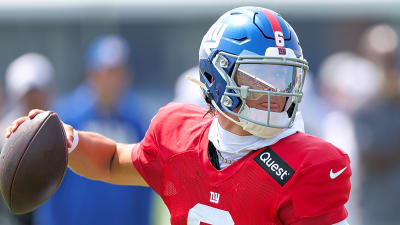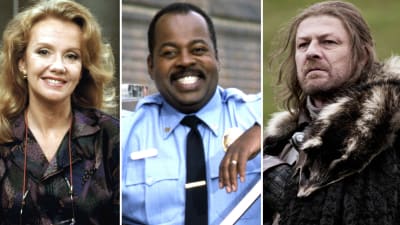
Despite having two top-tier quarterbacks over the past two decades, the Chargers have had an underwhelming history at the wide receiver position. Philip Rivers ranks sixth in all-time passing yards, yet he never had superstar options when it came to his wideouts. Keenan Allen will go down as one of the Chargers’ best receivers, and Mike Williams was an exceptional deep-ball threat. However, beyond those two, the position has largely lacked depth and consistency.
Many great QBs have succeeded without a Randy Moss or a Justin Jefferson. Now with Justin Herbert locked in as the Bolts’ franchise QB for a long time, the question remains: Will the Chargers finally build a wide receiver room worthy of their quarterback?
Lackluster History
Since 2013, Keenan Allen has been the lone consistent presence in the Chargers’ wide receiver room. He garnered over 10,000 receiving yards and six Pro Bowl selections. However, besides Allen, the search for a dependable QB counterpart has been, to say the least, unsuccessful.
Mike Williams, drafted No. 7 overall in 2017, was supposed to be that guy. To his credit, he’s had moments of dominance: multiple 1,000-yard seasons, improbable catches, and an evident chemistry with both Rivers and Herbert. Still, injuries and inconsistency prevented him from ever being dubbed “elite.” Despite solid numbers, Williams never made a Pro Bowl.
Beyond that duo, it’s been a rotating cast of “role players” with unfulfilled potential. Recent draft picks like Joshua Palmer and Quentin Johnston have struggled; neither has established himself as a genuine No. 1 or even a high-end No. 2 option. This offseason, Palmer signed with the Bills, and many fans have given up on Johnston.
While other franchises develop or trade for star wide receivers, the Chargers seem stuck in a cycle of overreliance on a supporting cast that cannot stay healthy or consistently produce. For a team with two elite quarterbacks in back-to-back eras, it’s a baffling and costly trend.
Unfair Comparisons
Justin Hebert is often discussed in the shadow of other quarterbacks from the 2020 draft class. Joe Burrow and Jalen Hurts are praised for their poise under pressure, while Tua Tagovailoa is often praised for his efficiency. Even Jordan Love, after sitting for years behind Aaron Rodgers, is now receiving the benefit of the doubt. Meanwhile, Herbert, despite holding nearly every statistical edge early in his career, is the one most often criticized.
But context matters.
Each of those quarterbacks has consistently had top-tier talent surrounding them. Burrow has thrown to Ja’Marr Chase and Tee Higgins. Hurts gets to enter each season with A.J. Brown and DeVonta Smith. Tua has Tyreek Hill and Jaylen Waddle. Admittedly, the Packers’ WR room is also considered bottom tier—something Love shares with Herbert. Herbert, though? After Keenan Allen’s departure, he’s been left trying to manufacture an offense behind a shaky O-line, an unproven receiving corps, and with a new play-caller almost every year.
Consider the 2021 Chargers and the 2024 Bengals by comparison. Both had bottom-tier defenses. Both had high-end quarterback play. But when Herbert narrowly missed the playoffs despite carrying his team all season, the narrative quickly turned on him: He can’t win big games. He’s just stat-padding. Yet when Burrow went through a similar situation in 2024, the conversation shifted: The Bengals failed him. They need to fix the defense.
It’s not that Burrow doesn’t deserve sympathy—he does. The problem is that Herbert rarely receives the same grace. Wins aren’t a quarterback stat, yet Herbert continues to take the blame for a franchise that hasn’t given him enough to work with.
It seems like “27-0” might be as big of a narrative as “28-3.” Still, Herbert’s two playoff losses can be attributed to an above-average team facing opponents with greater chemistry in the postseason, ultimately falling apart.
Justin Herbert has had just five All-Pro teammates since entering the league — none of them a wide receiver or running back.
Compare that to Hurts and Love, who’ve each played with 5+ All-Pros on both sides of the ball.#BoltUp #JustinHerbert #Chargers #NFLStats #LAFB… pic.twitter.com/bxTcnROAXa— LAFB Network (@LAFBNetwork) July 14, 2025
Established WR1
There is currently a bright spot in the Chargers’ WR room, though. 2024 second-round pick Ladd McConkey had a breakout rookie season with 1,149 receiving yards, 10th in the league. His production was what many fans had hoped to see from Johnston, making McConkey’s emergence a welcomed surprise.
In the Chargers’ 32–12 playoff loss to the Texans, McConkey was quite literally the only receiver making plays. He finished with 197 yards. The next closest Bolts receiver managed just 16.
During the regular season, even before the spotlight intensified late in the year, McConkey accounted for a sizable share of the Chargers’ receiving production. The Herbert-McConkey connection was the narrative heading into the playoffs, and the Texans capitalized on it. With the Chargers’ receiving corps resembling a one-trick pony, the Texans’ secondary had little trouble locking in on McConkey while overwhelming Johnston and DJ Chark Jr., who struggled to step up.
Despite the disastrous finish, the season gave fans some long-overdue optimism—particularly about Harbaugh and Horitz’s ability to build around what might be called the “McConkey foundation.” Bleak as the rest may be, it’s clear the Chargers have found their WR1. The shifty 23-year-old is poised to become a long-term cornerstone of the offense.
Ladd McConkey ranked as the No. 100 player in the NFL after just one season.
He’s also a two-time national champion.
Not bad for a former 3-star. pic.twitter.com/Vv6Ugz2Pza
— Matt DeBary (@MattDeBary) June 30, 2025
Question Marks
It’s unclear how, or perhaps more importantly, if players like Johnston or Jalen Reagor will show any improvement heading into the 2025 season. Reports from training camp so far have been relatively promising. It’s hard to put faith in players who, despite annually seeming set for a breakout year or meaningful development, never quite break the mold. How many more chances should they get?
Despite the pessimism, Jim Harbaugh still appears to be holding out hope for Johnston in particular. If one thing is clear, it’s that while Harbaugh’s methods may not always make sense, he has a way of figuring things out.
Jalen Reagor and Quentin Johnston might be 4/4 on "catch of the day" through the first four days of practice.
Chargers fans embrace the Harbaugh way and competition, but a handful don't want to see the players they don't like rise up and earn it.
This is good for the team! pic.twitter.com/6hcHNH01rc
— Tyler Schoon (@tylerjschoon) July 21, 2025
Mike Williams’ Departure
Mike Williams re-signed with the Chargers after spending a season bouncing between the Jets and Steelers. Unfortunately, he was gone almost as quickly as he had returned.
ESPN announced his retirement on July 17, marking an end to his eight-year career. The news followed his placement on the Physically Unable to Perform (PUP) list at the start of training camp.
While injuries had long prevented Williams from returning to his former self, it was still disheartening to see a player who meant so much to the franchise step away. His retirement felt inevitable, but his presence still could have provided valuable support to the offense.
Ultimately, Mike Dub made the right call by prioritizing his health, but he will be missed.
Rookie Potential
In the 2025 draft, the Chargers added two wide receivers: second-rounder Tre Harris and fifth-rounder KeAndre Lambert-Smith. After a brief contract holdout, Harris signed and joined the team at training camp.
Harris transferred from Louisiana Tech to Ole Miss for his senior season, where he totaled 1,030 receiving yards and seven touchdowns in 2024. He brings physicality and vertical ability, traits that also defined Mike Williams’ role in the Chargers’ offense. If healthy, he could immediately step into that vacated role, helping take pressure off Justin Herbert and the rest of the receivers.
Lambert-Smith, on the other hand, is more of a slot weapon.
He spent four seasons at Penn State, racking up over 1,500 yards and 11 touchdowns. After transferring to Auburn for his final year, he broke out in the SEC with 981 yards and eight touchdowns on just 50 receptions. He gives the Chargers a potential vertical threat who could pair well with McConkey in Greg Roman’s slot-heavy offense. While he may not be as polished as McConkey or Harris, his versatility could earn him early reps over other receivers on the depth chart.
If all goes to according to plan, it might be the first time in years the Chargers can say they’ve built a functional receiver room around their quarterback.
Continuation of Mediocrity?
Despite the new faces and coaching staff, questions still linger about whether the Chargers have genuinely turned a corner, or are merely reshaping the same middling identity. The current receiver room is promising but unproven, and the idea of adding a reliable veteran presence remains on the table.
A reunion with Keenan Allen, though unlikely, would bring much-needed depth and chemistry. More realistically, a move for someone like Amari Cooper could give Herbert a dependable target while the rookies develop. Until then, it’s hard to shake the sense that the Chargers are stuck in a cycle of ‘almost’.
More must-reads:
- Chargers star's brutal injury shows why players should hold out with new contracts on line
- 'Clearly separated himself': Why one QB is winning Browns' competition
- The '2024-25 NFL passing-yard leaders' quiz
Breaking News
Trending News
Customize Your Newsletter
 +
+
Get the latest news and rumors, customized to your favorite sports and teams. Emailed daily. Always free!








